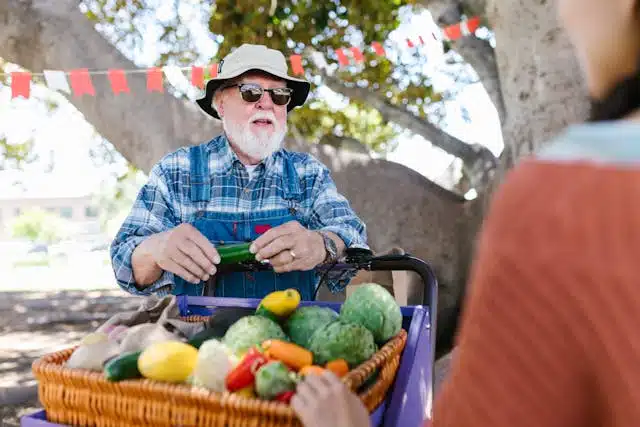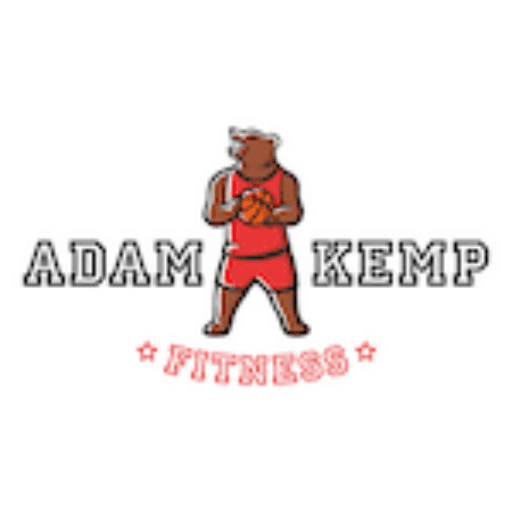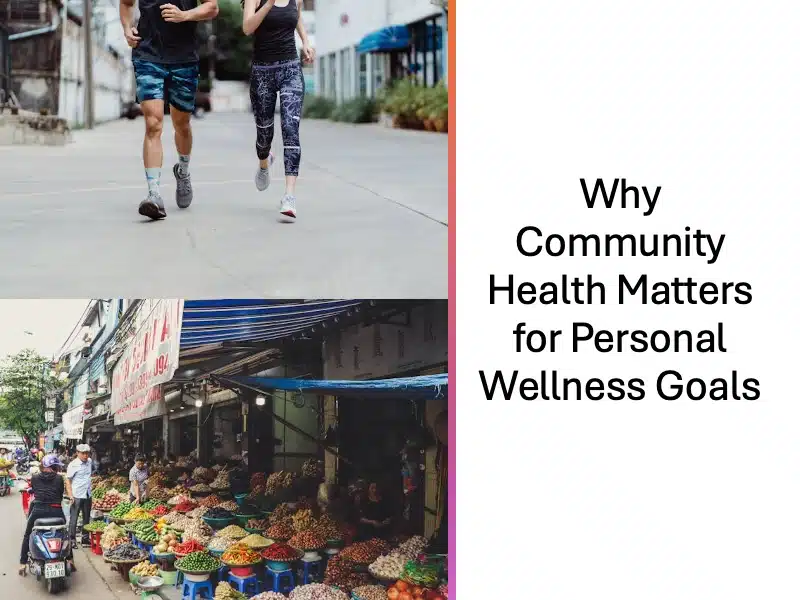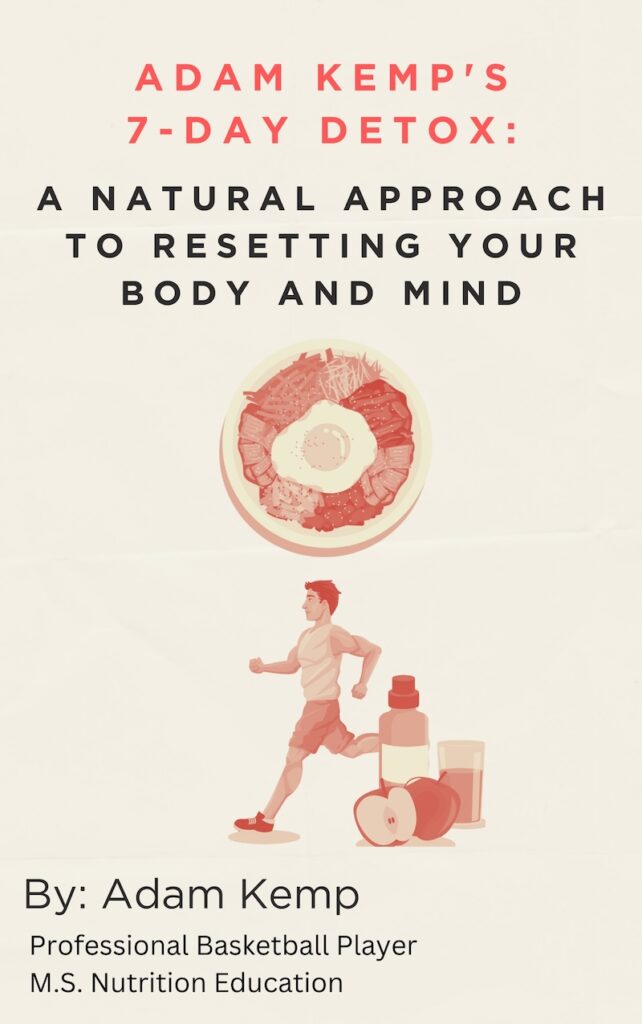Why Community Health Matters for Personal Wellness Goals
Community health isn’t just a public issue; it’s a personal investment with direct benefits, whether you want to improve physical fitness, mental health, general strength, or any other aspect of your health.
Many people think of wellness as a solo journey, focusing on things like nutritious meals, daily movement, mindfulness practices, or better sleep.
However, personal health is also influenced every day by shared systems, including clean water, safe neighborhoods, access to health education, and public services such as EMTs, nurses, and school programs.
Supporting community health means you’re not just giving, you’re receiving.
Every amount of time and dollars spent on preventive care, local clinics, school health programs, and cleaner environments helps build the foundation you rely on to eat well, stay active, breathe clean air, and feel safe.
When we support a healthy community, we make it easier for everyone, including ourselves, to thrive.
Personal wellness and community health are not separate goals: they’re two sides of the same coin.
What is Community Health?
Community health is a field of public health that focuses on improving the physical, mental, and social well-being of individuals within a specific geographic area or social group.
It involves collaborative efforts among public agencies, private organizations, and community members to create healthier environments, reduce health disparities, and promote personal wellness across diverse populations.

Unlike traditional healthcare, which often emphasizes individual treatment, community health prioritizes prevention, education, and systemic change.
It includes everything from air and water quality improvements to access to health clinics, school wellness programs, and clean, walkable neighborhoods.
According to public health experts, community health can be defined as a multi-sector, interdisciplinary effort that uses public health science, evidence-based strategies, and cultural competence to optimize the well-being of all people living or working in a specific community (Goodman et al., 2014).
This definition acknowledges that no single sector or individual is solely responsible for creating health; it’s a shared endeavor shaped by the unique characteristics, needs, and values of each community.
Efforts in community health span multiple domains, including:
- Environmental safety (e.g., air pollution reduction, safe water access)
- Health education in schools and public programs
- Preventive care through vaccination drives, screenings, and wellness checks
- Mental health support via local counseling services and social programs
- Public policies that improve access to nutritious foods, physical activity spaces, and reliable healthcare
These systems are often supported by community health assessments and health surveillance tools that track disease trends, identify risk factors, and measure the effectiveness of public health interventions over time.
Critically, community health is both a process and a product.
It’s about engaging local stakeholders to set health priorities and implement solutions, but it’s also about achieving measurable improvements, like lower obesity rates, fewer ER visits, better birth outcomes, and higher quality of life scores.
Key Points: In short, supporting a healthy community doesn’t just benefit the population as a whole, but it also empowers individuals to meet their personal wellness goals in environments that actively support healthy living.
How Community Health Impacts Individual Well-Being

Community health extends far beyond access to doctors or clinics: it’s a comprehensive system of environmental, social, and policy-based factors that collectively shape your ability to live a healthy life.
A healthy community includes walkable neighborhoods, clean air and water, nutritious food access, safe housing, and public systems that detect and manage health threats.
Importantly, these attributes serve as the foundation upon which personal wellness routines, such as exercise, sleep, and healthy eating, can actually succeed.
One of the most important tools for protecting individual well-being within a community is public health surveillance.
This refers to the ongoing collection, analysis, and interpretation of data related to population health.
It includes monitoring for disease outbreaks, tracking trends in chronic illness, identifying environmental hazards, and more.
Health surveillance allows public health officials to:
- Detect early signs of illness or environmental risks in specific communities
- Identify patterns that might signal larger public health threats
- Implement timely interventions to prevent problems from escalating
For instance, if there is a spike in respiratory illnesses tied to air pollution in your area, local health departments may issue air quality alerts, recommend staying indoors, or provide resources to vulnerable groups like children and older adults.
These data-driven responses enable individuals to make informed decisions about their daily plans, such as adjusting outdoor activities or using an air purifier at home.
Without these systems, people are left to react to health crises instead of preventing them.
When community health systems function effectively, they make it easier for individuals to stay well, avoid illness, and pursue their personal health goals without unexpected setbacks.
This is why investing in aspects of community health, from better sidewalks to faster disease reporting, ultimately improves quality of life at the individual level.
Your personal well-being is deeply influenced by the safety, stability, and health of your surrounding environment.
Shared Community Health Resources Shape Personal Wellness Opportunities
Community health has a direct impact on your ability to make and sustain healthy choices, as the resources available where you live, work, and raise a family are crucial to your wellness outcomes.
For example, having access to well-maintained parks encourages physical activity, while clean public spaces support mental health and stress relief.
Affordable grocery stores with fresh produce make it easier to maintain a balanced diet.
In contrast, communities without these basic resources often face higher rates of obesity, diabetes, and other chronic health issues, not because residents don’t care, but because the environment works against their efforts.
As I mentioned in my article on the Healthy SNAP Act, improving access to healthier food is crucial for improving health outcomes in lower-income populations and areas, but real change doesn’t come from simply removing unhealthy options.
It requires replacing them with sustainable, appropriate solutions that make nutritious choices easier, more affordable, and more appealing on a daily basis.
This illustrates a key principle of community health: wellness is not just an individual endeavor, but a shared outcome shaped by public investment.
Infrastructure like walking trails, community clinics, accessible transportation, and safe recreational areas are all part of the foundation that supports a healthy community.
When municipalities and organizations invest in public health infrastructure, they’re not just creating conveniences, they’re creating conditions that allow more people to thrive.
And when residents advocate for cleaner streets, better zoning, or improved access to healthcare, they’re supporting not only vulnerable neighbors but also their own long-term wellness.
In this way, supporting community health programs is an act of self-care as much as it is civic engagement.
Everyone benefits when the environment makes healthy living easier and more accessible for all.
Preventing the Spread of Disease Starts with Collective Action
Contagious diseases don’t respect personal boundaries, and as recent global health events have shown, even the healthiest individuals are impacted when illness spreads through a community.
Community health plays a critical role in disease prevention by coordinating efforts that protect not just individuals, but entire populations.
While personal hygiene habits, such as hand-washing, wearing a mask, and staying home when symptomatic, are important, they’re only part of the solution.
Widespread protection is achieved through community-level strategies, including vaccination campaigns, accessible testing, early warning systems, and targeted health education.
These efforts reduce transmission, protect high-risk groups, and prevent healthcare systems from becoming overwhelmed.
When public health systems function effectively, the benefits are far-reaching.
You’re less likely to miss work due to illness, your family stays safer, and your ability to stay consistent with personal wellness goals is preserved, even during periods of increased health risk.
Collective action isn’t just a moral responsibility, it’s a practical investment in maintaining a stable, supportive environment for everyone to live healthier lives.
Mental Health and Community Support Go Hand in Hand
Wellness is holistic, meaning it addresses mental health with the same priority as physical health.
Just like clean air and nutritious food support the body, supportive relationships and safe environments are essential for a healthy mind.
Research consistently shows that a strong sense of community can reduce feelings of isolation, anxiety, and chronic stress.
Whether it’s having trusted neighbors, access to local support groups, or simply feeling seen and valued in your environment, social connection is a powerful protective factor for mental well-being.
Communities that invest in mental health resources, such as accessible counseling services, peer-led support networks, and safe gathering spaces, build resilience from the ground up.
These programs don’t just help people cope in crisis; they develop everyday stability and emotional strength.
And it works both ways.
Individuals who prioritize their mental health often become anchors in their communities, helping others, strengthening local networks, and contributing to a healthier, more connected environment.
Key Points: Mental health and community support are mutually reinforcing, forming a cycle of care that benefits everyone involved.
Environmental Health and Where You Live
Have you ever noticed how much your surroundings affect your energy levels, mood, or ability to stick to a wellness routine?
That’s not a coincidence.
Air pollution, noise, a lack of green space, and inadequate waste management all have negative impacts on personal health.
Exposure to poor environmental conditions can lead to respiratory problems, disrupted sleep, and chronic stress, all of which make it harder to maintain wellness.
When communities prioritize clean air, healthy ecosystems, and sustainable development, everyone reaps the benefits.
You can exercise outside, sleep more soundly, and feel more at ease knowing your environment supports your health goals rather than working against them.
Final Thoughts: The Importantce of Your Community’s Health for Your Own Health
Protecting your personal health starts with understanding the health of the community around you.
Local health trends, like spikes in flu cases, poor air quality, or boil water advisories, can have an immediate impact on your daily habits and wellness goals.
Fortunately, staying informed doesn’t require a medical degree.
Simply following your local health department on social media, subscribing to public health alerts, or visiting your city’s website can provide the timely information you need to make safer choices.
Whether it’s postponing an outdoor workout, using an air purifier, or encouraging a family member to get vaccinated, small actions informed by local data can make a big difference.
Awareness is a powerful wellness tool.
When you are aware of what’s happening in your area, you can adapt proactively, maintaining consistency even when external conditions are unpredictable.
However, the deeper truth is that personal health and community health are inextricably linked.
You may track your steps, prep healthy meals, and practice stress management, but without a safe, informed, and supported community, your progress is vulnerable to disruption.
That’s why investing in community health, through advocacy, support for public programs, or simply staying engaged, isn’t just good citizenship.
It’s a direct investment in your well-being.
When we prioritize shared resources and collective action, we build stronger, more resilient communities that help everyone, not just survive, but thrive.
This website does not provide medical advice. This website site does contain affiliate links, and purchases may earn a commission.
Read my Medical Disclaimer, Review Disclaimer, and Publishing Policies for more details. Use of this site indicates acceptance of these terms.



